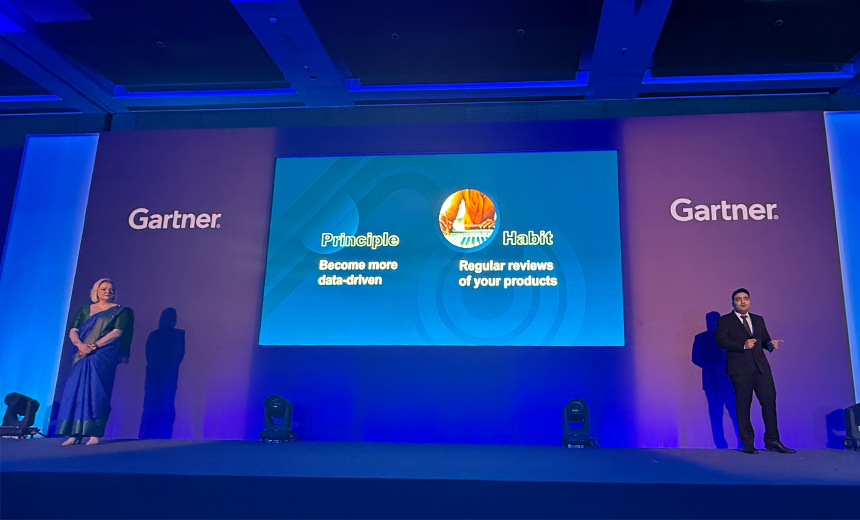Artificial Intelligence & Machine Learning
,
Governance & Risk Management
,
Next-Generation Technologies & Secure Development
Gartner Emphasizes the Need for AI Innovation Coupled with Effective Data Governance

Nearly three years have passed since generative AI was unveiled through OpenAI’s ChatGPT; however, only a few organizations have realized substantial improvements in employee productivity. Gartner reports that over 50% of CEOs predict artificial intelligence will significantly impact their industries within the next three years.
See Also: AI vs. AI: Leveling the Defense Playing Field
Chief Data Officers (CDOs) and Chief Data and Analytics Officers (CDAOs) are crucial to driving successful data and analytics (D&A) initiatives, essential for demonstrating the business value of AI projects.
Gartner forecasts that by 2028, 80% of generative AI applications will evolve from existing data management platforms. Analysts assert that this is an opportune moment for D&A professionals, as CDAOs must seize the AI potential sought by other executive leaders, or risk being merged into less strategic roles.
As ambitions for D&A grow and AI experimentation proliferates, the focus has shifted toward consistent execution and scalability. However, many D&A leaders feel overwhelmed with routine data management responsibilities, necessitating a refreshed AI strategy.
At the recent Gartner Data and Analytics Summit in Mumbai, Ehtisham Zaidi, Vice President Analyst at Gartner, alongside Aura Popa, Senior Director Analyst, explored ways for D&A leaders to innovate within their data management frameworks while facilitating successful AI initiatives.
“Data management is exhausting,” Zaidi noted. “We find ourselves ensnared in cycles of data preparation, battling high expectations from stakeholders. This relentless push for technological transformation can deplete morale even faster than it drains resources—leaving many in doubt of their own capabilities.”
Challenges in Data and AI
D&A leaders encounter a myriad of challenges tied to data and AI, including technical debt, escalating costs, lengthy preparation processes, ambiguous regulations, and high expectations. One primary concern is that many organizations lack a foundational understanding of D&A, with over half reporting issues with data quality. Furthermore, 49% of organizations identify showcasing AI value as a significant hurdle.
“A misplaced reliance on data for AI has given rise to various complications,” Popa explained, alluding to data breaches, bias, lack of leadership accountability, poor return on investment, deepfakes, potential job loss, and misinterpretations by AI, commonly referred to as hallucinations.
The Importance of Governance in D&A
During the summit, governance emerged as a pivotal theme, capturing the attention of analysts. Zaidi emphasized, “Governance has never been a strong suit for us. The advent of AI demands swifter action, requiring a readiness to take risks and accept failures. Crucially, we must recognize two things: data will never be fully governed, and waiting to establish complete governance before pursuing AI is unrealistic. A more pragmatic approach, such as trust models, is essential.”
Trust models are designed to assess data assets by evaluating their value, lineage, and associated risks. These models provide real-time insight into data trustworthiness, which is vital for instilling confidence and can help define governance parameters tailored to specific contexts.
Sumit Agarwal, also a Vice President Analyst at Gartner, provided a technical overview of AI governance, focusing on the management of AI trust and security. A significant conclusion drawn from the session highlighted the importance of securing AI governance funding at the board level, noting that many organizations still need to develop robust policies and governance frameworks.
Addressing Fears and Risks
In a subsequent session, Anirudh Ganeshan, Senior Principal Analyst at Gartner, discussed prevalent fears, risks, and obstacles that D&A leaders face. Based on a recent Gartner D&A survey, he pointed out that the top challenges hindering success are predominantly non-technology-related. Issues such as budget constraints, company culture, skills shortages, and low data literacy rates are compounded by inadequate D&A governance.
“Interestingly, many of these challenges do not stem from technological issues. From a business standpoint, the overarching concern revolves around the fear of missing out on technology that can enhance efficiency, experience, and overall productivity,” Ganeshan concluded.
Strategic Recommendations from Gartner
To navigate these challenges, Gartner analysts suggest several strategic initiatives. Organizations should transition from fear to trust by informing stakeholders of industry and technology trends, emphasizing impact over hype.
Moreover, it’s vital to align data challenges and opportunities with organizational goals to enhance data-driven decision-making. Collaborating with early adopters can also spotlight high-value use cases, conveying organizational benefits. D&A leaders need to create a systematic approach that captures experiences and lessons learned, while also developing a strong talent management plan that embodies necessary skills and competencies.
Crafting a Comprehensive AI Strategy
In conclusion, D&A leaders have the potential to transform the promise of AI into reality by crafting and implementing tailored AI strategies. This begins with establishing a clear vision that assesses AI’s significance, anticipating value, and identifying risk thresholds. A well-structured road map should be developed, maturing essential capabilities across organization, governance, and data management.
Finally, continuous recalibration of the AI strategy is crucial by ensuring alignment with business, data, and IT initiatives while engaging all relevant stakeholders in the process.
